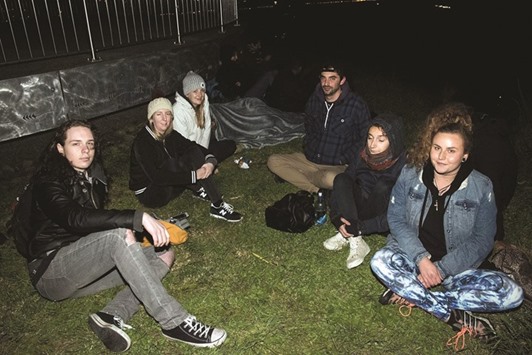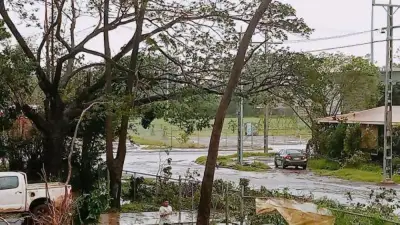“We don’t have any indications at the moment to believe it will rise, but we can’t rule that out,” Key told reporters in Wellington, adding that details of the casualties were still being confirmed.
Key said a military helicopter was being dispatched to the coastal tourist town of Kaikoura, near the epicentre of the 7.8 magnitude quake, some 91km north-northeast of Christchurch in the South Island.
The earthquake and a series of aftershocks shook New Zealand in the early hours, generating a tsunami and sending thousands of people fleeing for higher ground.
Power was out and phone lines down in many areas of the country, roads were blocked by landslips and the civil defence ministry warned that waves of up to 5m remained a risk for several hours.
“The first waves have arrived but we know that it is too early to say what the impact has been,” said Sarah Stuart-Black, national controller at the ministry of civil defence. “Our concern is what is coming.
Future waves are coming that may be bigger than what has come before.”
The first tremor, just 15kms deep, struck the island nation just after midnight, jolting many from their sleep and raising memories of the 6.3 magnitude Christchurch quake in 2011, which killed 185 people.
New Zealand’s Geonet measured the quake at magnitude 7.5.
New Zealand lies in the seismically active “Ring of Fire”, a 40,000km arc of volcanoes and oceanic trenches that partly encircles the Pacific Ocean.
Around 90% of the world’s earthquakes occur within this region.
St John Ambulance said it was sending helicopters carrying medical and rescue personnel to the coastal tourist town of Kaikoura.
It is completely cut off and officials said there are reports of a collapsed building.
“There are some reports of casualties but the picture will be clearer as day breaks,” acting civil defence minister Gerry Brownlee said.
In Wellington, there was gridlock on the roads to Mount Victoria, a hill with a lookout over the low-lying coastal city, as residents headed for higher ground.
“I’m just sort of parked by the side of the road and I think people are trying to go to sleep the same as I am,” Wellington resident Howard Warner told Reuters after evacuating his seaside house.
Richard Maclean, a spokesman for the Wellington City Council, said there was structural damage to several buildings.
Residents were advised to stay away from the central business district and the train network was closed for checks.
Wellington international airport, however, was expected to open as usual.
In Christchurh, where tsunami sirens continued intermittently, three evacuation centres were accepting residents.
Police have set up roadblocks to prevent people from returning to lower-lying coastal areas.
Pictures shared on social media showed buckled roads, smashed glass and goods toppled from shelves in shops in Wellington and the upper South Island.
“The whole house rolled like a serpent and some things smashed, the power went out,” a woman, who gave her name as Elizabeth, told Radio New Zealand from her home in Takaka, near the top of the South Island.
There was initial confusion when emergency services first said there was no tsunami threat.
Christchurch Civil Defence Controller John Mackie said that while the earthquake was centred inland, the fault line extended offshore for a considerable distance.
That meant that seismic activity could cause movement out at sea, leading to a tsunami.



